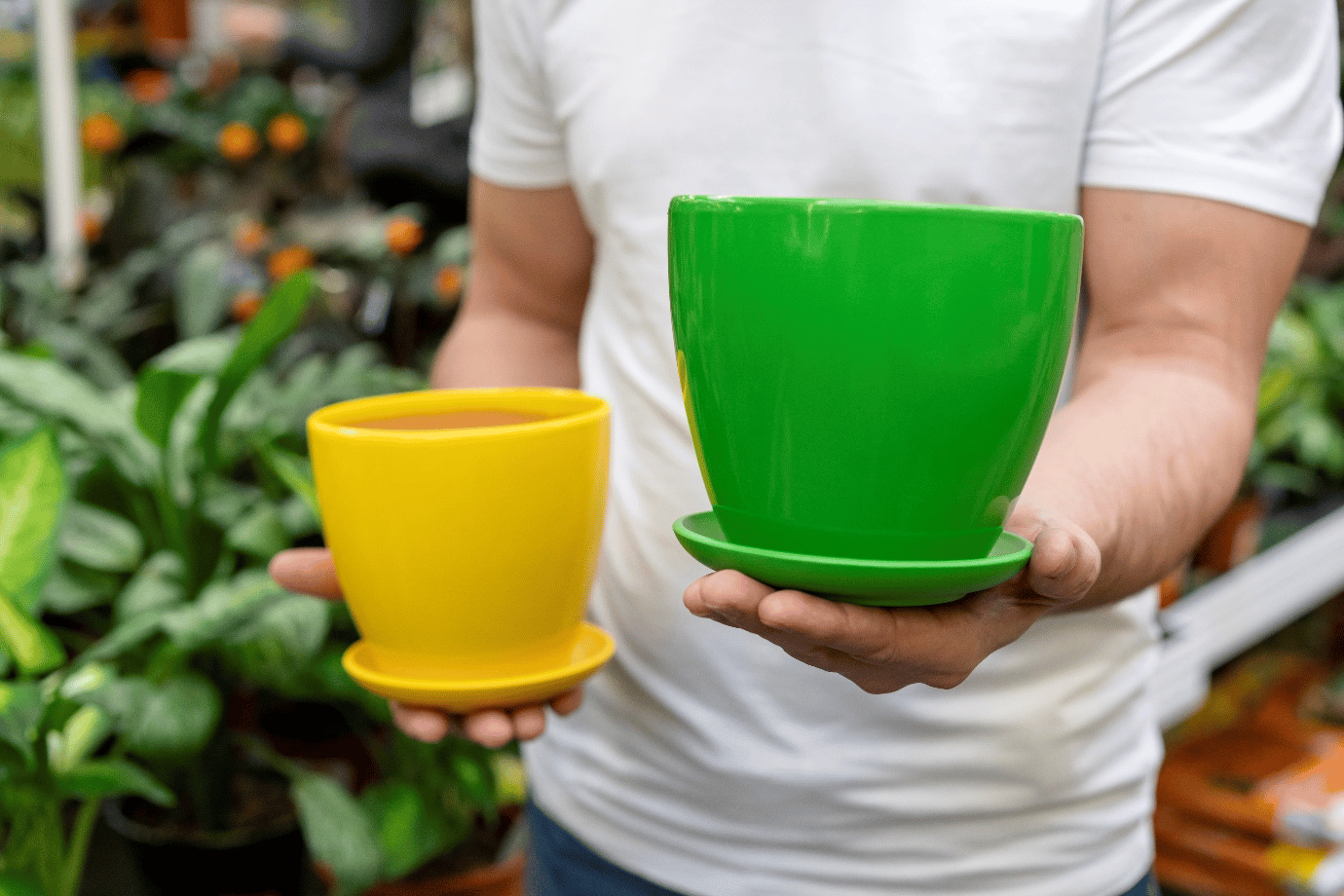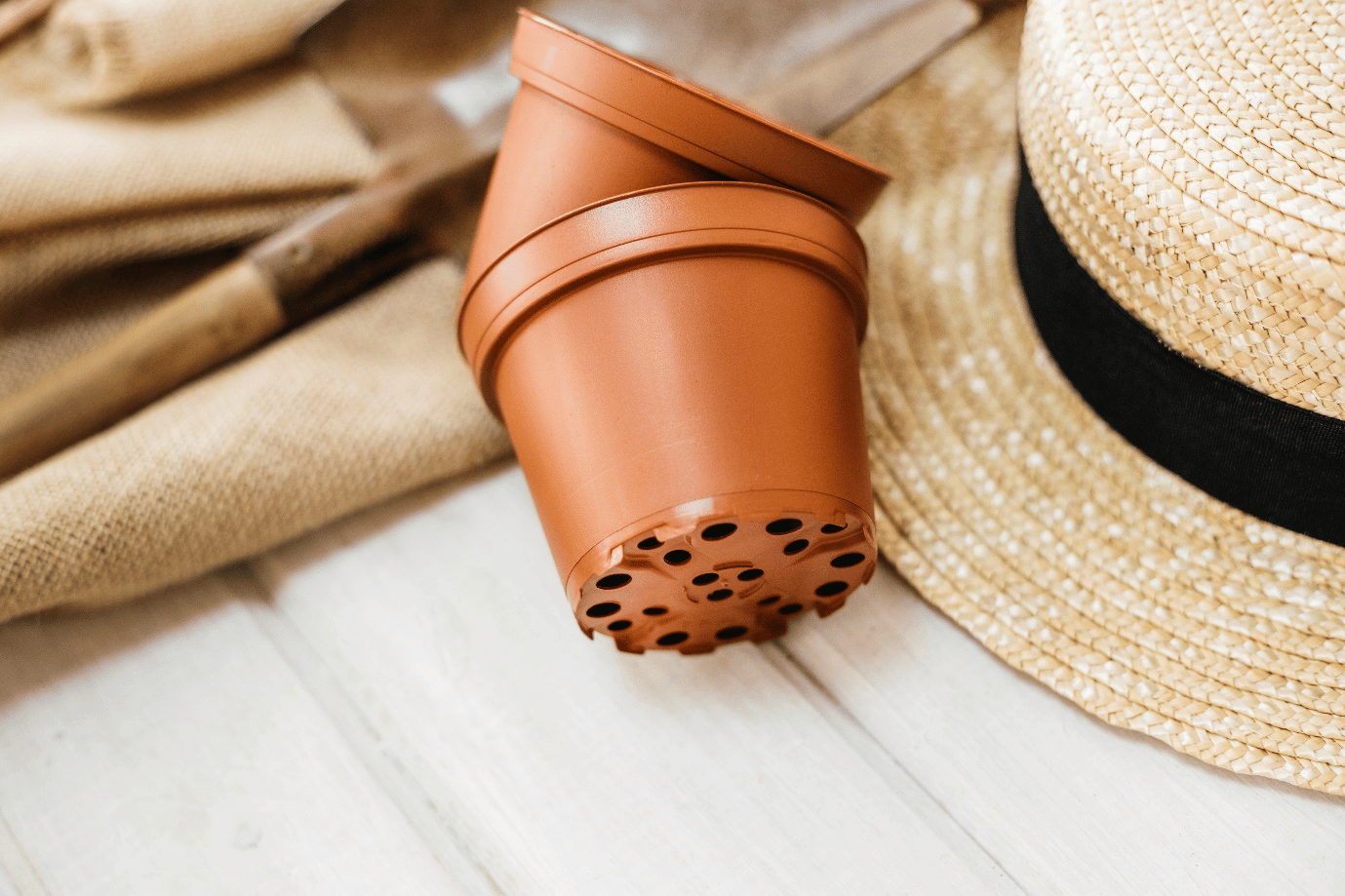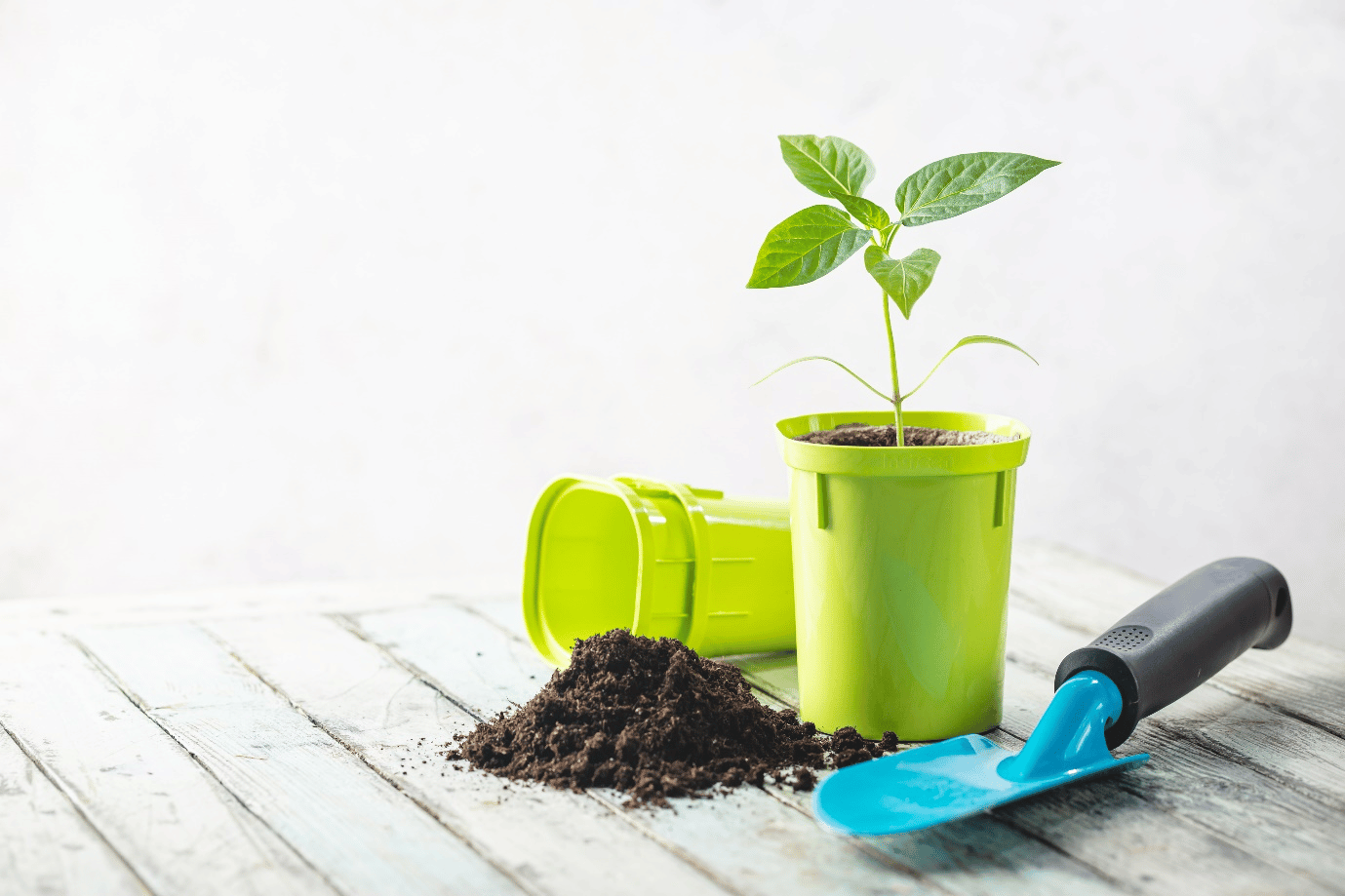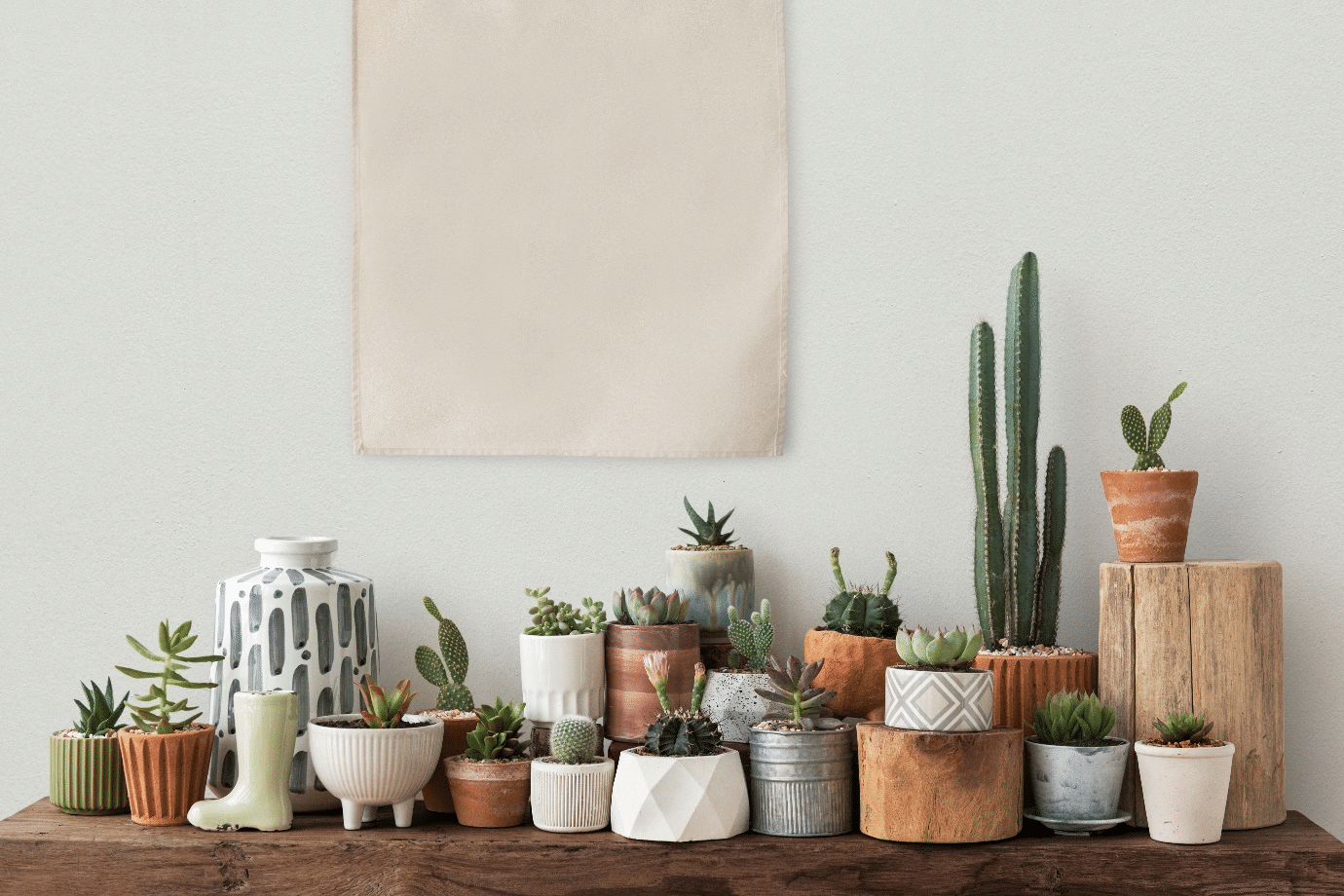

But really, are ceramic pots good for plants? It’s a question that gets thrown around in the houseplant world all the time, and one here at Release Pots, that we’re no stranger to. What pot you choose for your houseplant is always debatable, some plant parents swear by terracotta, and others love ceramic. People debate over it and get into discussions about what works for them because it matters to the health of your plants.
What pot you keep your plant in impacts the overall health of the plant and how well you can keep it alive. This is our breakdown of ceramic Vs plastic Vs fabric pots and, ultimately, which is the better choice for your plants.
As we mentioned before, it matters so much because it impacts the overall health of your plant. The type of pot you choose to keep your houseplants in effects almost every factor. We’ve listed just some of these below.
There are two types of people when it comes to watering. Those that overwater and those that underwater. If you’ve managed to find a middle ground, you should let the rest of us in on your secrets. Watering your plants is how you keep them alive and happy, but if you overwater them, not only do you run the risk of drowning them, but you also run the risk of root rot. This is where your plant’s roots are wet for too long, and they don’t get the chance to dry out. Roots need oxygen, so having them wet for too long will end up killing your plant.
The roots of your plant are a huge determining factor in whether or not your houseplant will thrive. With most traditional pots, you’re unable to see the roots, they’re what you want to pay attention to. The roots and root ball of the plant are the reason why your plant will sustain its growth over a period of time. Selecting a pot for your houseplant will influence this factor even further.
As we mentioned, healthy roots are the key to a healthy plant. If you’re choosing between pot materials, you can run the risk of choosing a pot that will suffocate the roots and leave them to suffer.

Drainage is a huge factor when deciding between pots, and it is because of the importance it plays not only in the plant roots’ health but also in how well the plant can drain, getting rid of the excess water. When watering, you want a good balance of a plant that’s not wet, and that’s not dry. Selecting the right pot is the reason a plant can regulate this balance.
Drainage holes also play a part when choosing a pot. If you choose a pot that doesn’t have any drainage, then you run the risk of it being drowned, whereas if you choose a pot that has drainage holes or several, your plant can drain well and get that much-needed oxygen.
Starting with those pretty ceramic pots. They’re glazed in all sorts of colors and patterns and come in all types of shapes and not to mention sizes. But, while they sound great, and houseplants can work a treat for some, are they really the best choice for your houseplants?
The pros of ceramic pots, of course, are that they’re a standout. When purchasing ceramic pots, you’re able to purchase pots that can match the style of your home or room. Ceramic pots can also be used as a ‘cover pot’. This is when you place your houseplant in a plastic pot or one of our Release Pots, which is used to cover the pot. By doing this, you’re able to still ensure healthy drainage and a healthy plant.
Although not every plant prefers to be in a ceramic pot, there are some that are the exception. As ceramic pots retain moisture within the pot itself, plants such as pothos, spider plants, Boston fern and maidenhair fern are among some of the plants that will do fantastic in ceramic pots.
While they are beautiful, they often don’t provide the practicality your houseplants need. The majority of ceramic pots don’t come with drainage holes. In addition to this, they’ll break if you drop them. Depending on where you purchase your ceramic pots from, they can also be very costly. Now while that’s fine for a few here or there, if you are planning on filling your house to the brim with houseplants, they’re not the most sustainable choice. Ceramic pots are also notoriously hard to remove plants from when it comes time to transplant.

The dreaded plastic pots it’s what every nursery is filled with. When you purchase a new plant, they usually come in a plastic pot, and while it may be what you start with, it doesn’t mean it’s what your plant needs to stay in.
They’re cheap. Plastic pots come with your houseplant, so you don’t need to go and buy an additional pot to put your houseplant in. Along with this, plastic plants also have fantastic drainage, which is one reason why nurseries use them. The majority will come with 3-5 drainage holes.
While they are cheap, you only get what you pay for with plastic pots. They aren’t going to last you a lifetime, and if you are planning to fill your house with plants, you’ll end up going through quite a few. Over time and when exposed to the sun for long periods of time, they can crack and become brittle. Not to mention, plastic isn’t great for the environment. It’s a material that won’t ever break down, which is something to consider when needing to purchase your next pot.

The dreaded plastic pots it’s what every nursery is filled with. When you purchase a new plant, they usually come in a plastic pot, and while it may be what you start with, it doesn’t mean it’s what your plant needs to stay in.
One of the main benefits of fabric pots is the fact that if you drop them, they won’t break. This is great for those trying to fill their plant shelf with as many plants as possible to get the ultimate shelfie. Another big pro of fabric pots is their ability to display moisture levels from the outside. You’re able to feel if the pot is too wet, and you can avoid overwatering. Fabric pots also provide a much more breathable environment for the plant’s roots, giving you an overall healthier plant.
Similar to a plastic pot, your fabric pot isn’t going to last you a lifetime. Although they are durable, they do have a shelf life, and the more you use them, the shorter that becomes. Unlike ceramic and plastic pots, fabric pots aren’t as sturdy. This can make for an annoying and messy situation when needing to transplant a plant or move plants around within a space.
Of course, we had to give Release Pots a mention. Release Pots are an ideal choice for avid houseplant lovers. This signature style of pots makes it easy to remove, plant, and transplant it to another pot.
Release Pots are innovative. Our pots have handles on the side, making them perfect for moving around your shelf or home, and you won’t ever get that awful feeling of a pot slipping out of your hands ever again. The biggest pro of our Release Pots is the ease of transplanting and moving. With the pull-apart system, it’s incredibly easy to use. This system is perfect for plants like succulents and cactuses that have sharp and spiky edges.
As all plants are different, not all of them may enjoy being in a Release Pot. While Release Pots have so many other benefits, it’s always best to put your plant in a pot that works best for it.
Here at Release Pots, we’re passionate about plants, big and small. Our innovative potting system has been designed to help you along the way in the green thumb journey. When deciding if ceramic pots are good for plants, Release Pots always recommends you look at the plant’s needs.
